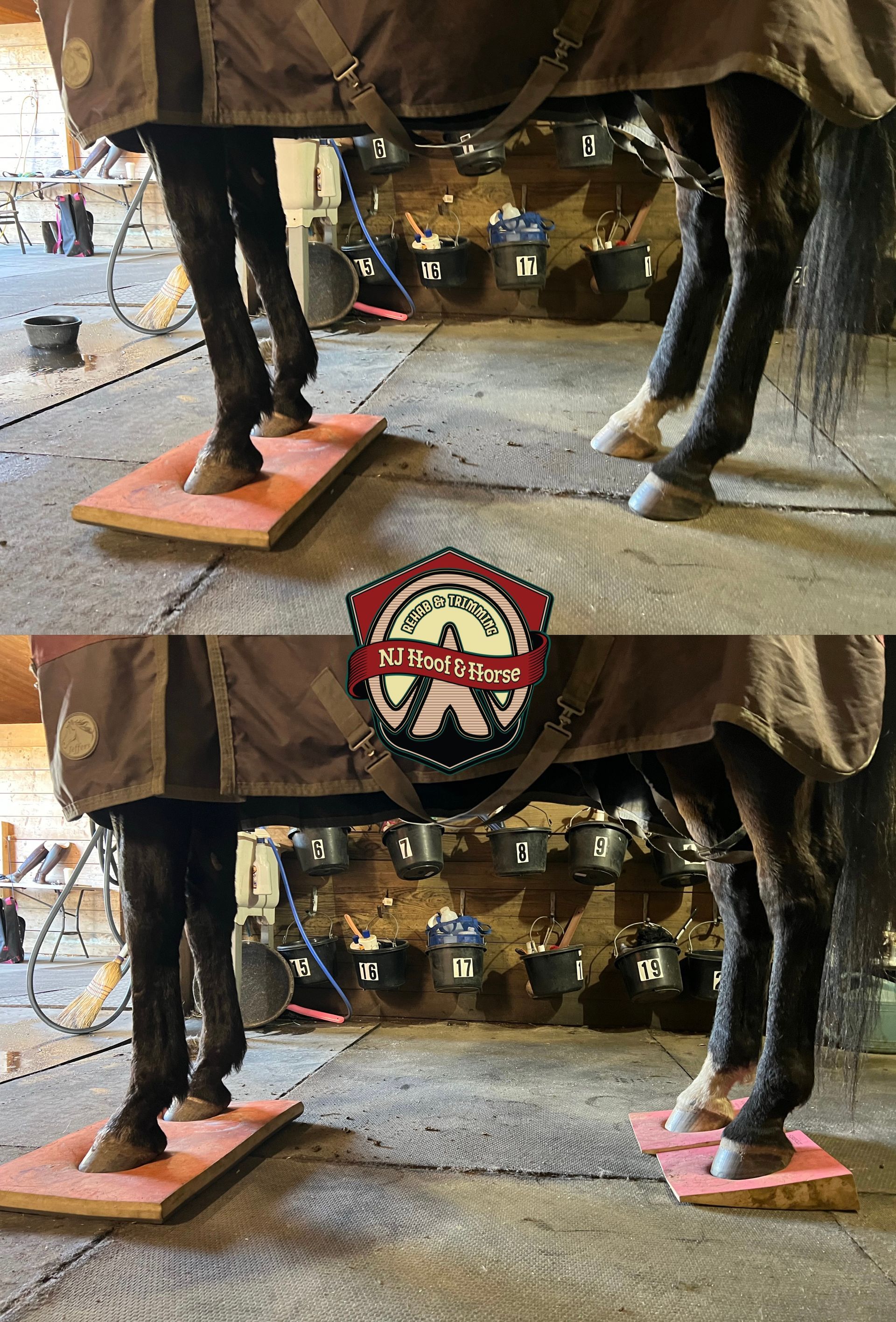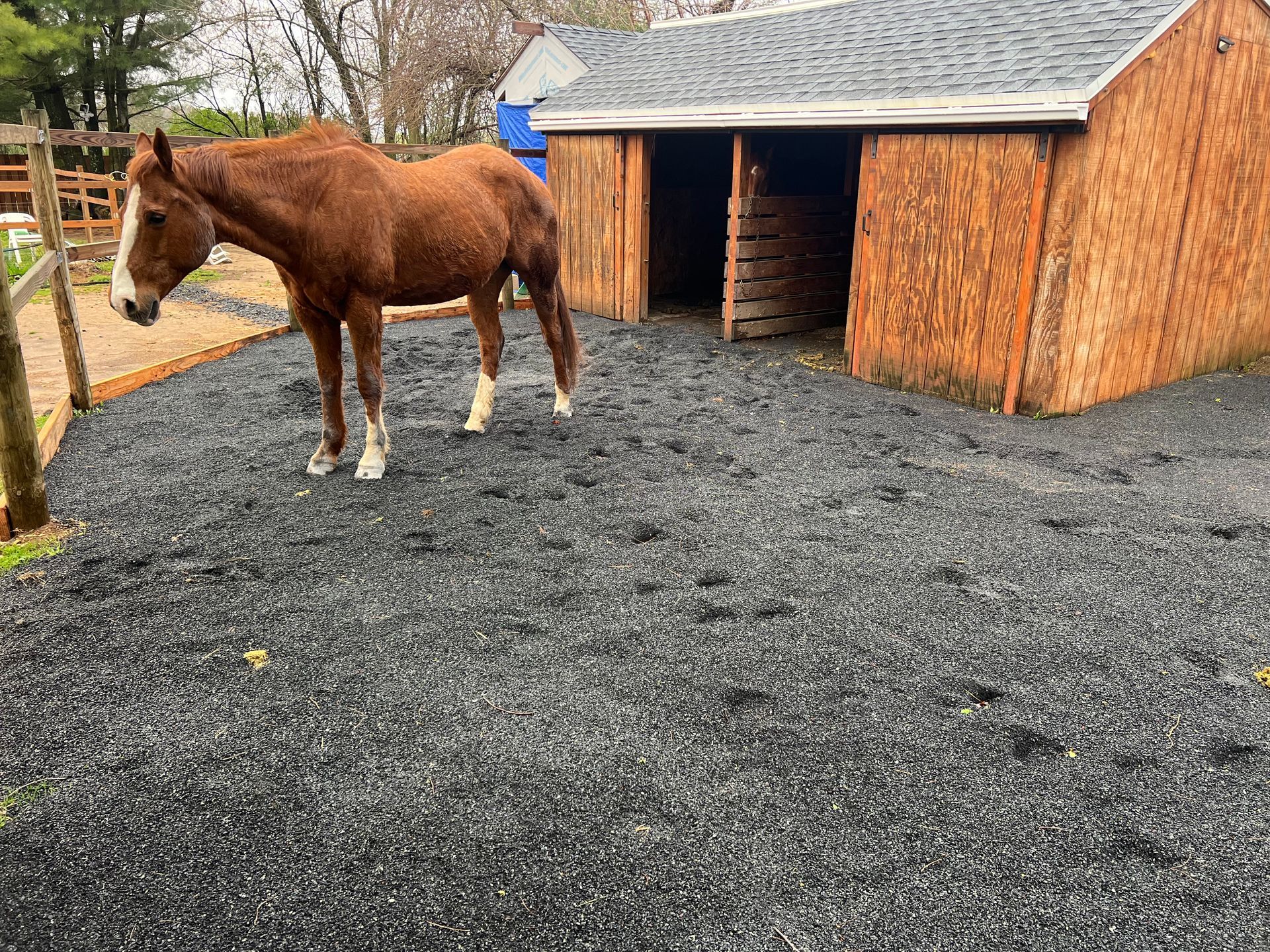The truth about club feet
One Minute Discussions #11
Discussing Natural Hoof & Horse Care
THE TRUTH ABOUT CLUB FEET
No hoof is perfect. There will always be differences in all four feet of the horse. One foot can have a steeper angle than the other and many times its normal. However, when a horse develops a foot that looks very steep, has a high heel and at times a toe flare, there’s a good chance that the horse is club footed.
What is it?
A club foot/hoof has a more upright look than an “average” looking hoof. The heels of a clubbed foot are in a steep position. The bone angle (palmar or plantar angles) is steep and the hoof pastern axis is almost always broken forward. I compare it with human high heel shoes. Imagine what it’s like to wear high heels 24/7.
What causes it?
There are many things that can cause club feet. In a lot of instances it can be from improper saddle fitting, improper rider position/balance in the saddle, tendon/muscle/bone injury that caused pain and the hoof started to develop a steep angle, dental problems and improper trimming. All of this can make the horses foot adapt to the environment and become clubbed.
Whenever I tell owners that their horse has a clubbed foot they instantly ask me a logical question… is this treatable? Can we get rid of a club foot?
Hmm I’ll answer both Yes and No.
It really depends on the age of the horse and the situation.
There’s a lot of nuances to consider when we’re planning to “treat” a club foot. Many times a club foot can’t be treated but can definitely be managed! Hundreds of horses are managing to live a happy life while having club feet. The most important thing in managing club feet is knowing how to approach, trim and care for them!
There are cases when foals develop club feet earlier in life and the foot is addressed immediately. In these cases, if proper steps are taken, the club foot usually disappears making the foal grow a “normal” looking foot. In other instances, it doesn’t work that way. When dealing with a club foot we have to find the root of the problem to properly manage it. If the root of the problem is not dealt with, we can’t expect any good changes... chances are that the horse will continue growing a foot that’s even more steeper! As was mentioned, many horses will still have an upright looking foot despite changes in the environment and frequent trimming but this doesn’t mean they can’t live with it. We have to focus on managing it, not treating it. If we’re trying to force a “normal” looking shape on a club foot then we’ll cripple the horse... it won’t end well!
As hoof care specialist Pete Ramey once said, the club foot is an adaptation the horse created to the environment.
So remember, the secret to managing club feet is listening to what the horse is trying to tell us. If we see it’s safe to lower more heel, do it. If we see that we’ve reached the limit, don’t push it!
Every horse and hoof is different so every trimming approach should be different when we meet a club foot case. Almost in all club foot cases we have to lower the heels and rocker them (bevel them at an angle). When lowering heels we should be very cautious not to overstress the tendons. Also, some club feet tend to develop a toe flare since the hoof is biomechanically leaning forward. Many times club feet will have thrush infection. This happens because the frog is raised above ground level by the heel. Treating thrush infection in club feet is very important because sometimes the horse will avoid loading the heel due to pain from the infection.
In theory, when trimming club feet we should:
* Lower (not force) and rocker the heels
* Manage flares around the perimeter of the foot and especially in the toe
* Treat possible thrush infection
As was said, we should always keep in mind how the tendons will react to lowering the heels. If we over-trim the heels, the horse will be left standing on his tippy toes. If we’re not aggressive enough in lowering the heel, we won’t be able to achieve good results. Listen to your hoof care provider to accomplish results (1).
Does your horse have a club foot? How is it managed? Tell me in the comments!
Denys Antonenko
856-238-3533
(1) - Ramey Pete, Club Foot, Hoofrehab.com, https:// www.hoofrehab.com/ClubFoot.htm

